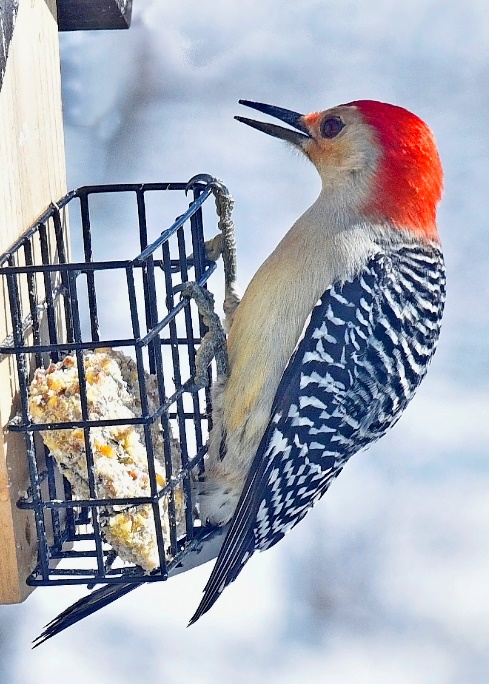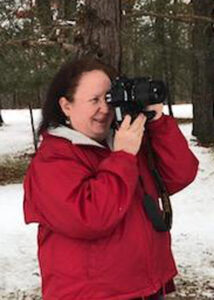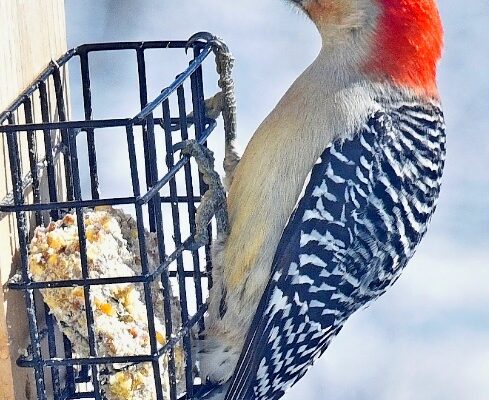Rural Perspectives: Red-bellied woodpeckers common in our area
by Diane Constable

The red-bellied woodpecker is named for the pale red-brown hue on its belly that is not easily seen, but visible on this photo of a male. Photo credit: Diane Constable
The red-bellied woodpecker (Melanerpes carolinus) is a year-round visitor to local suet feeders. An adult is up to 10 inches long and is one of our larger woodpeckers. The black-and-white pattern, partially red head, and pale gray underside make it easy to identify. Females have red along the nape of their neck and none on the top of their head. Not as easily seen is the pale red-brown hue low on the belly, for which it is named.
Red-bellied woodpeckers have an interesting flight pattern – flapping their wings to gain height, resting for a second causing them to drop a few feet, then flapping again, which makes their flight look like they are on a roller coaster.
These woodpeckers are common in our area and prefer to live near wooded or semi-wooded areas. The male finds a nest site in dead branches and dead or damaged tree crevices. The couple work to carve out a new hole or will enhance former nesting holes of other birds. The resulting wood chips are used for nesting material. The female lays two to six eggs. Both parents take care of the eggs, which hatch in about 12 days. In about four weeks, the chicks are ready to leave the nest, and the parents will continue to care and feed the fledglings for at least another 10 weeks.
Red-bellied woodpeckers perform a valuable service to our trees by eating adults and larvae of destructive wood-boring insects. They also enjoy suet and berries. Acorns, nuts and seeds are a favorite and are stored in tree and bark crevices for winter eating.
Fun Fact: This bird has sticky spit and a long, barbed tongue, which makes it easy to reach into cracks and crevices to capture unsuspecting insects.
 Diane Constable is an avid photographer. She serves on the Unadilla Township Planning Commission and is a member of the township’s Parks and Recreation Committee. Diane also enjoys her dogs and gardening.
Diane Constable is an avid photographer. She serves on the Unadilla Township Planning Commission and is a member of the township’s Parks and Recreation Committee. Diane also enjoys her dogs and gardening.


